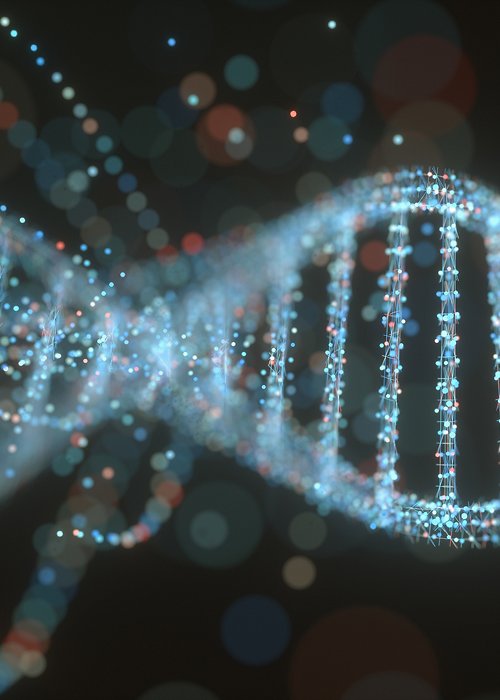DNA was first isolated by Friedrich Miescher, a Swiss biochemist in 1869. It was a brilliant, but not complicated operation: DNA can be extracted from a mixture of any cells, even your own, even at home. The recipe for the experiment is really very simple and can be found at the end of this story.
The structure of DNA was revealed only a century later, in 1953, by the scientists James Watson, an American, and Francis Crick, an Englishman, who won the Nobel Prize for this work in 1962 together with another researcher, Maurice Wilkins.
Yet, this was not really entirely true.
While Watson and Crick were working on the DNA structure in the Department of Physics at Cambridge University, a young female colleague of Wilkins was making splendid crystals at King’s College London: her name was Rosalind Franklin.
X-ray crystallography is a formidable investigatory technique with which it is possible to study the arrangement of atoms and molecules in a microscopic crystal. Some substances, like salt, sugar or quartz, spontaneously form crystals while others, like proteins or DNA, crystallise only with the aid of sophisticated and often very slow procedures. A good crystallographer must be extremely precise and infinitely patient, and Rosalind excelled in both these areas. In 1951, she succeeded in obtaining and photographing a DNA crystal. Those X-ray photos were extraordinarily well-defined and one in particular, number 51, allowed Rosalind to infer that DNA has two paired filaments. But relations between her and Wilkins were very strained. She was a woman, brilliant, determined and also Jewish, too much for that conservative and chauvinistic environment. In his book The Double Helix published in 1968, Watson wrote about the Nobel-prize winning discovery saying, on the subject of Rosalind: “The real problem, then, was Rosy. The thought could not be avoided that the best home for a feminist was in another person’s lab.” Maurice Wilkins spoke of her in not very complementary terms and did not think twice about subtracting a copy of photo 51 from her to show to Watson and Crick. When they saw the picture, they were amazed: it was proof of the existence of the helical double filament structure that they had only conjectured. When Watson and Crick announced their discovery to the world in 1953, Rosalind was sincerely delighted and congratulated them. She never knew of the vital role she had played in the description of the DNA structure. She died in 1958 aged only 37 years due to a tumour probably caused by continuous exposure to X-rays without sufficient protection. The merits of Franklin were partially recognised many years after her death. In the last chapter of The Double Helix, Watson wrote: “All of these people, [written about in this book are still alive], should they desire, can indicate events and details they remember differently […]. But there is one unfortunate exception: Rosalind Franklin […] we both came to appreciate greatly her personal honesty and generosity, realizing years too late the struggles that the intelligent woman faces to be accepted by a scientific world which often regards women as mere diversions from serious thinking. [Rosalind] continued working on a high level until a few weeks before her death.”
A biographical book and a film starring Nicole Kidman as Franklin tell her story.
by Andrea Bellati



